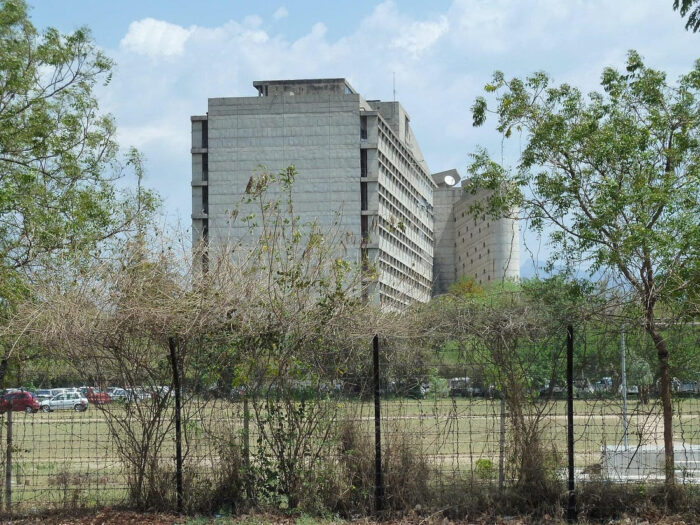 The Punjab Government has taken a forward-looking step for retired employees and elderly pensioners by launching the Pensioner Sewa Portal—an initiative personally championed by Chief Minister Bhagwant Singh Mann and Finance Minister Harpal Singh Cheema. Digitising pension services, this reform aims to end the indignity and physical strain of long office visits, especially for the state’s 3.15 lakh senior pensioners. With a digital life certificate, profile updates, grievance redressal, and family pension modules, the portal promises timely, accurate and dignified service—a long-awaited convenience for retirees.
The Punjab Government has taken a forward-looking step for retired employees and elderly pensioners by launching the Pensioner Sewa Portal—an initiative personally championed by Chief Minister Bhagwant Singh Mann and Finance Minister Harpal Singh Cheema. Digitising pension services, this reform aims to end the indignity and physical strain of long office visits, especially for the state’s 3.15 lakh senior pensioners. With a digital life certificate, profile updates, grievance redressal, and family pension modules, the portal promises timely, accurate and dignified service—a long-awaited convenience for retirees.
What the Portal Gets Right
This initiative deserves appreciation for modernising service delivery, reducing dependence on banks and treasury offices, and streamlining routine processes that for decades have created unnecessary hassles for Punjab’s elderly. It can cut queues, curb discretion, and improve traceability—precisely the sort of plumbing reform that makes the state feel humane to its most senior citizens.
The Arrears Crisis That Digitisation Can’t Fix
While the new portal streamlines pension operations, it does not change the underlying financial reality. Tens of thousands of Punjab government retirees are waiting—sometimes for years—for payments of their legitimate entitlements: General Provident Fund (GPF) final settlements, leave encashment, commutation of pension, and ex-gratia grants. These arrears are not mere accounting entries; they represent money urgently needed for post-retirement life, healthcare, and family emergencies.
The Ledger of Delays: Scale and Composition
As of October 2024, the state acknowledged to the Punjab and Haryana High Court that arrears owed to employees and pensioners totalled ₹18,228 crore. Of this, about ₹14,089 crore relates to leave encashment and revised pay/pension arrears pending since January 2016 (when the Sixth Pay Commission was announced), and ₹4,139 crore pertains to DA/DR arrears for July 2021–March 2024. The backlog stretches the meaning of “temporary delay” beyond recognition.
GPF and First Pension: When ‘Final’ Isn’t Final
In mid-2025, official dashboards recorded tens of thousands of GPF Final Settlement bills processed in the iHRMS system. This amount represents the lifelong savings of employees, accumulated through regular deductions from their salaries during service. Yet, most bills submitted to treasuries between April and July 2025 were reportedly stalled following verbal instructions not to release payments. As a result, many employees who retired in late 2024 were still awaiting their first pension credit by July 2025—an outcome that defeats the very purpose of a “retirement benefit.”
Leave Encashment, Commutation, and Ex-Gratia: The Stubborn Bottlenecks
Leave encashment arrears form the bulk of the backlog, with delays stretching back to 2016. Commutation and ex-gratia settlements have been bogged down by procedural hurdles, inter-departmental disputes, and litigation. For New Pension Scheme employees, ex-gratia grants and the death-cum-retirement gratuity have faced stop-start implementation for years, creating a pipeline that moves only sporadically.
Six Lakh Lives on Pause
By the government’s own reckoning, more than six lakh individuals—serving employees and pensioners—are directly affected by non-payment of arrears. This is not a marginal administrative issue; it is a systemic failure affecting a constituency larger than many districts.
A Timeline That Tests Patience—and Lifespans
Some retirees now face a wait of up to 15 years for dues owed at the time of retirement. The roadmap placed before the courts contemplates full clearance only by 2031—meaning a cohort that retired in 2016 may not see their entitlements until they are approaching eighty. Time, cruelly, is the cost centre no one budgets for.
The Human Consequence: Hardship and Lost Dignity
Behind the figures lies a sobering ledger of personal loss. Without access to their savings, retirees have been forced to rely on family support or loans; some have passed away before receiving what was rightfully theirs. Court petitions and pleas have become routine, with even octogenarians compelled to seek judicial relief simply to trigger payments they earned over a lifetime of public service.
Why the Backlog Persists: Fiscal Contradictions, Political Choices
The arrears crisis is not technical; it is fiscal—and political. Punjab’s treasury bears a heavy subsidy burden, including large outlays for free electricity, free water, and a suite of populist schemes. In candid affidavits and public reports, the state has admitted it cannot meet these liabilities at once and must stagger payments over years, effectively prioritising giveaways over obligations to those who kept the state running.
What Would Actually Move the Needle
No portal—however well designed—can substitute for cash in the treasury and clarity in priorities. Three moves would change the trajectory: (1) a time-bound arrears clearance fund protected from diversion; (2) statutory first charge on revenues for retirement-related dues; and (3) transparent monthly dashboards of arrears sanctioned, bills passed, and amounts credited, with department-wise accountability. Only then will process improvements translate into justice delivered.
The Bottom Line
Punjab’s Pensioner Sewa Portal is a commendable and necessary reform that will make routine pension service more humane and efficient. But it cannot mask the deeper crisis of unpaid retirement dues—an issue that exposes fundamental contradictions in state policy and priorities. The road to justice for Punjab’s retirees will demand not just technical modernisation, but fiscal discipline and the political will to put senior citizens ahead of freebies.